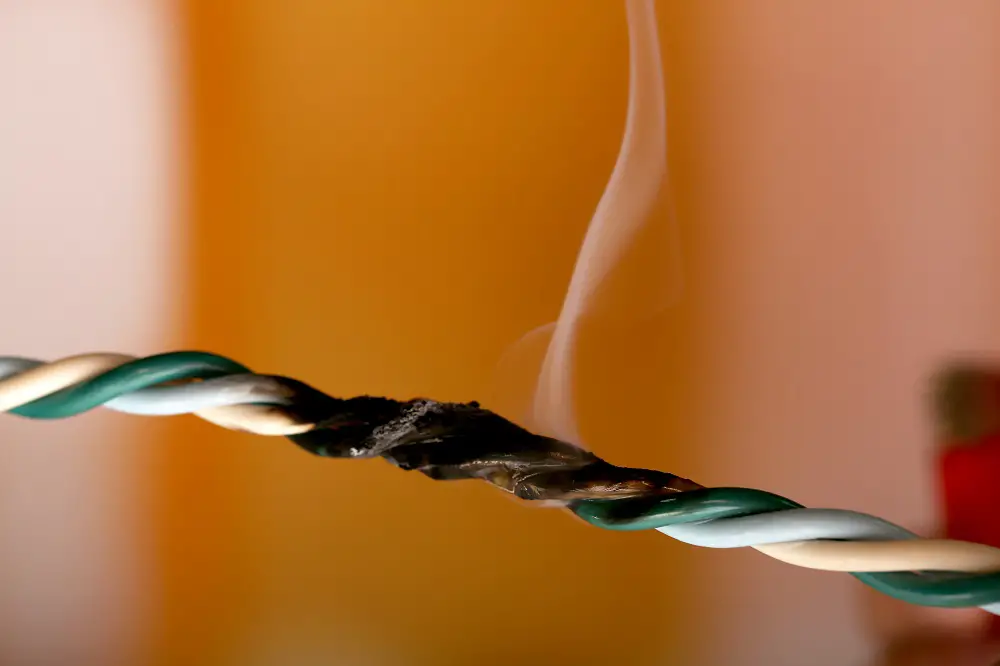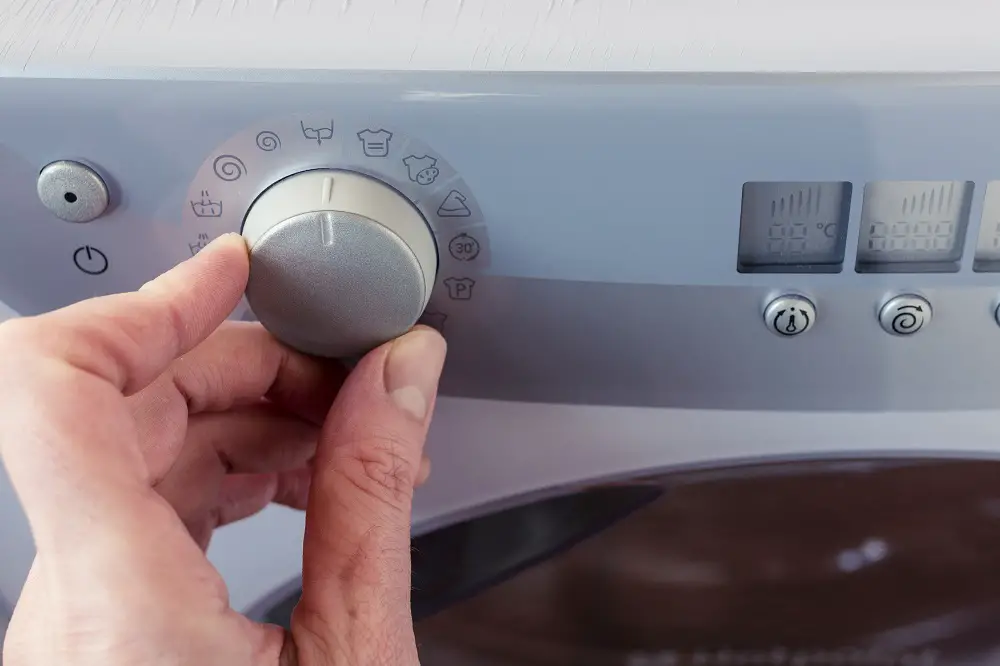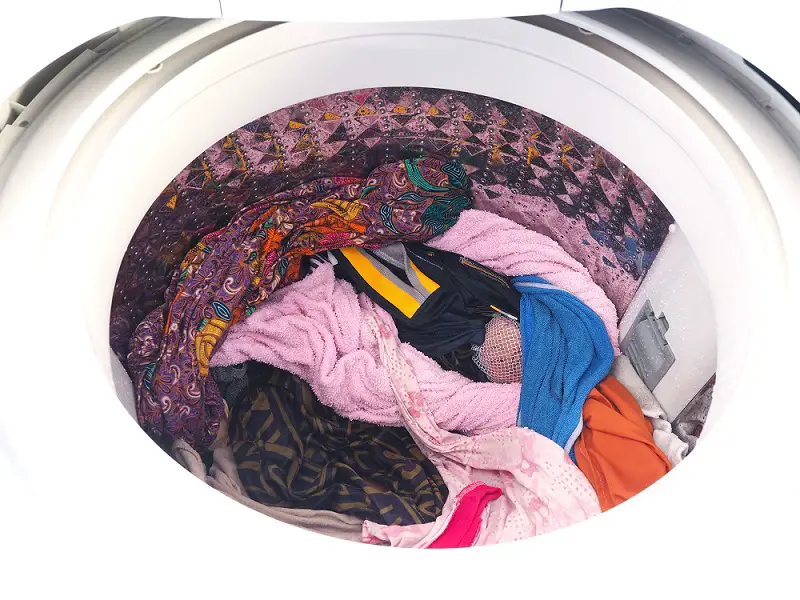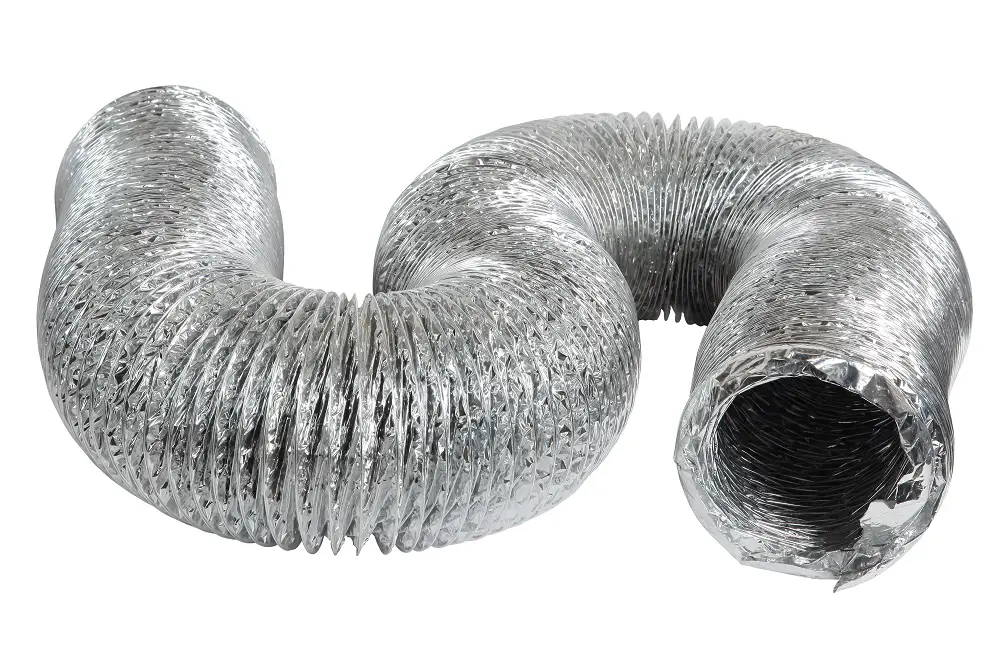A portable clothes dryer takes an average of two hours to dry a full load of laundry. However, the time varies between 30 minutes and 4 hours depending on factors like load size, material, and the type of machine.
In comparison, a tumble dryer takes about 30 – 45 minutes to dry a full load of laundry and up to an hour for dense fabrics.
Since portable dryers come as vented or ventless and in different capacities, the drying times differ accordingly.
Table of Contents
Drying Times For Portable Dryers
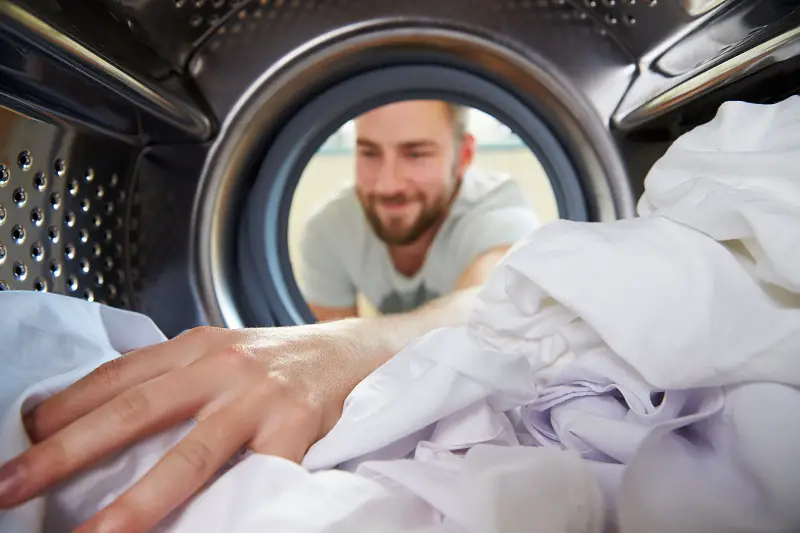
The drying times for portable dryers depend on many factors and can only be roughly estimated. To give you the best idea of what you can expect we included many devices and re-calculated their drying results into a typical full-load laundry.
The typical drying times for different portable dryers, based on different factors, can be summed up as follows:
| Portable Dryer | Typical Drying Time |
|---|---|
| Vented models | 30 – 200 minutes (dense fabrics take more time) |
| Condenser dryer | 135 minutes |
| Heat pump dryer | 165 – 240 minutes |
| Rack-style dryer | 180-minute timer |
| Spin dryer | 2 – 5 minutes (no complete drying) |
Our results don’t represent the efficiency or energy cost of each dryer type, but they do show, that portable dryers are not faster than normal tumble dryers.
Furthermore, portable dryers do have very limited capacities and you’ll typically have to do several cycles in a portable dryer for a single load of your washing machine.
To efficiently use a portable dryer, you need to apply the machine only for dedicated clothes. These are typically items you need often or can’t air-dry easily.
Portable Drying Time Depends on These Things
The actual drying time in portable clothes dryers varies with many factors.
- Type of vent:
Ventless dryers take longer to dry than vented ones. - Load material:
Heavier fabrics mustn’t be mixed with regular, everyday laundry; they require more drying time. - Machine type:
Among portable dryers, as with a traditional dryer, heat pump dryers take longer to dry than condenser or tumble dryers and are also more energy-efficient. The rack-style portable dryer takes the longest. - Capacity:
Machines with larger load capacity will take longer to dry, especially when fully loaded. - Load size:
Larger loads will take longer to dry, as would dense fabric-like blankets. Consider separating your laundry into smaller loads. - Dryer maintenance:
A well-maintained dryer will work faster than one that isn’t. It is recommended to clean your dryer at least twice per year for smooth operations. - Setting:
Most dryers have different settings – the hottest is for fast drying, while the coldest is slower. Consider setting your dryer as per the manufacturer’s instructions to suit the load of fabric you’ll be drying.
10 Tips to Dry Faster
Here are some tips for drying your laundry faster using your portable dryer:
1. Avoid Overloading the Dryer
While compact dryers might not have the large capacity of regular dryers, you mustn’t overload the dryer.
The wet clothes need ample room to spin or tumble in the dryer for quicker drying. Even the rack-style clothes dryer mustn’t be overloaded for the hot air to be equally and effectively distributed.
Loading your portable dryer with fewer items helps dry clothes faster, with an increased airflow between the garments.
2. Regularly Clean the Dryer Vent for a Vented Dryer
To maintain maximum efficiency, you must regularly check and clean the vent system in vented dryers.
Many portable dryers are used with an indoor dryer vent due to the lack of outer wall access to run a vent hose. Such a vent system uses a filtration system that captures lint, similar to a lint filter, which needs to be cleaned often.
Portable tumble dryers often have debris and lint buildup in the vent system that blocks the warm air from escaping, leading to reduced efficiency and increased drying times.
Once you’ve unplugged the machine’s power cord, use a brush, vacuum cleaner, or dryer cleaning brush to clean the interior and exterior vents.
3. Clean the Lint Screen
A loaded lint screen affects the drying time by hindering the proper airflow required by the dryer to work properly while also being a fire hazard.
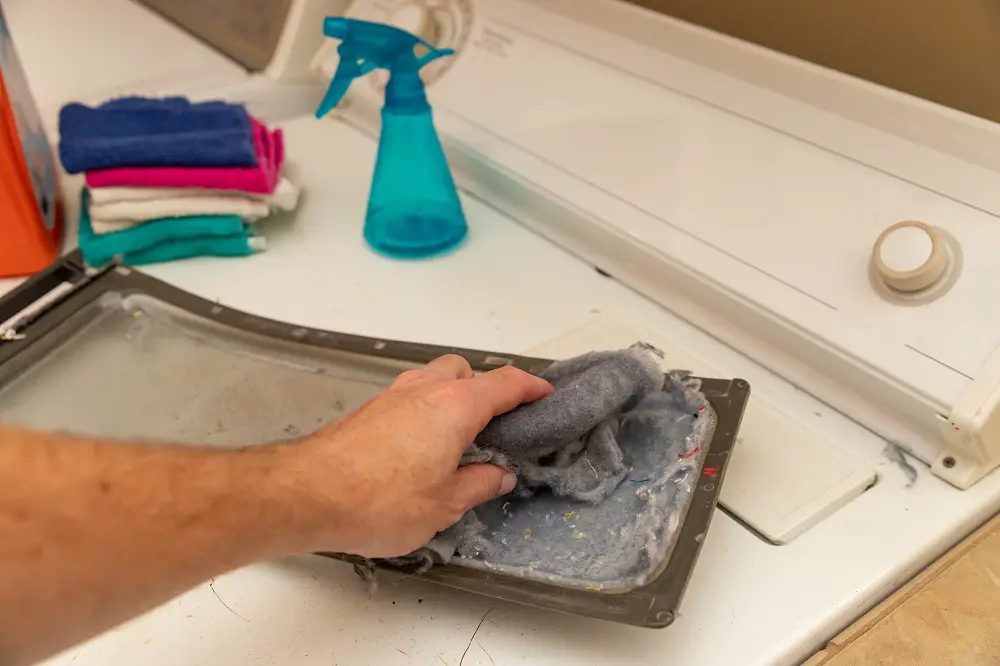
It’s essential to clean the lint screen in a ventless dryer, as in any electric dryer, after every drying cycle. Remove the lint screen and roll off the lint with your fingers after each use. Thoroughly clean the lint screen and lint trap about every 6 months.
Read more on how to service a dryer here.
4. Shorter the Dryer Hose
Your dryer hose must only be long enough to reach your dryer a few feet away from the wall. A shorter hose helps pump the moist air out of the machine faster than a full-length one. This allows the dryer to work up to 20% faster.
5. Select the Right Drying Cycle
Different fabric types require different drying cycles, often mentioned on the clothing care tag. While spin dryers might not have different options, some of the best portable dryers, with stainless steel drums, have several drying modes to suit different fabrics.
It is important to select the appropriate drying cycle to suit the fabric type to prevent your laundry from overdrying or getting burnt or damaged.
6. Throw In a Dry Towel
Using a single heavy item like a dry towel with a load of wet clothes helps absorb moisture and possibly helps speed up drying times.
You must remove the towel after about 5 minutes if the load has only a few items or 15 minutes for a full load.
7. Repeat the Spin Cycle
Whether you have a portable washer or a regular one, run the laundry through another spin cycle in the washer to reduce the amount of water in the garments. It’ll only take a few minutes.
It helps dry the laundry faster simply by using centrifugal force instead of heat to follow drying with an electric clothes dryer or a drying rack.
8. Sort Laundry by Weight
Heavier items like jeans and towels need to be sorted and dried in a separate cycle from your regular clothes. Mixing the loads takes the entire load much longer to dry.
9. Use Dryer Balls
Dryer balls come in different materials, like vinyl, rubber, and wool, and help reduce drying time by 14 – 25%. They also prevent the laundry from clumping together, reduce static in your laundry, and are more effective than dryer sheets.
10. Avoid Opening the Door Mid-Cycle
Opening the dryer door mid-cycle, especially when you’ve to add a forgotten item, makes the warm air escape, and the laundry takes a little more time to completely dry.
If the item you add in between the dryer cycle is particularly wet, it will result in unevenly dried laundry at the end of the drying cycle.
Regular dryer maintenance helps maintain its performance and efficiency, which is ideal for quicker laundry drying.
Check your dryer for clogged vents, a full lint trap, any user error, or a malfunction (like a broken heating element) often. If your dryer takes longer to dry than usual, try some of the tips mentioned here, followed by fixes or replacements as needed.
Conclusion
Portable dryers are nice tools for small places and can help to dry a part of the laundry efficiently.
Nevertheless, their small capacity is a big disadvantage and results in a mess if you want to dry full loads of laundry. The number of drying cycles increases immensely and your workload too.
